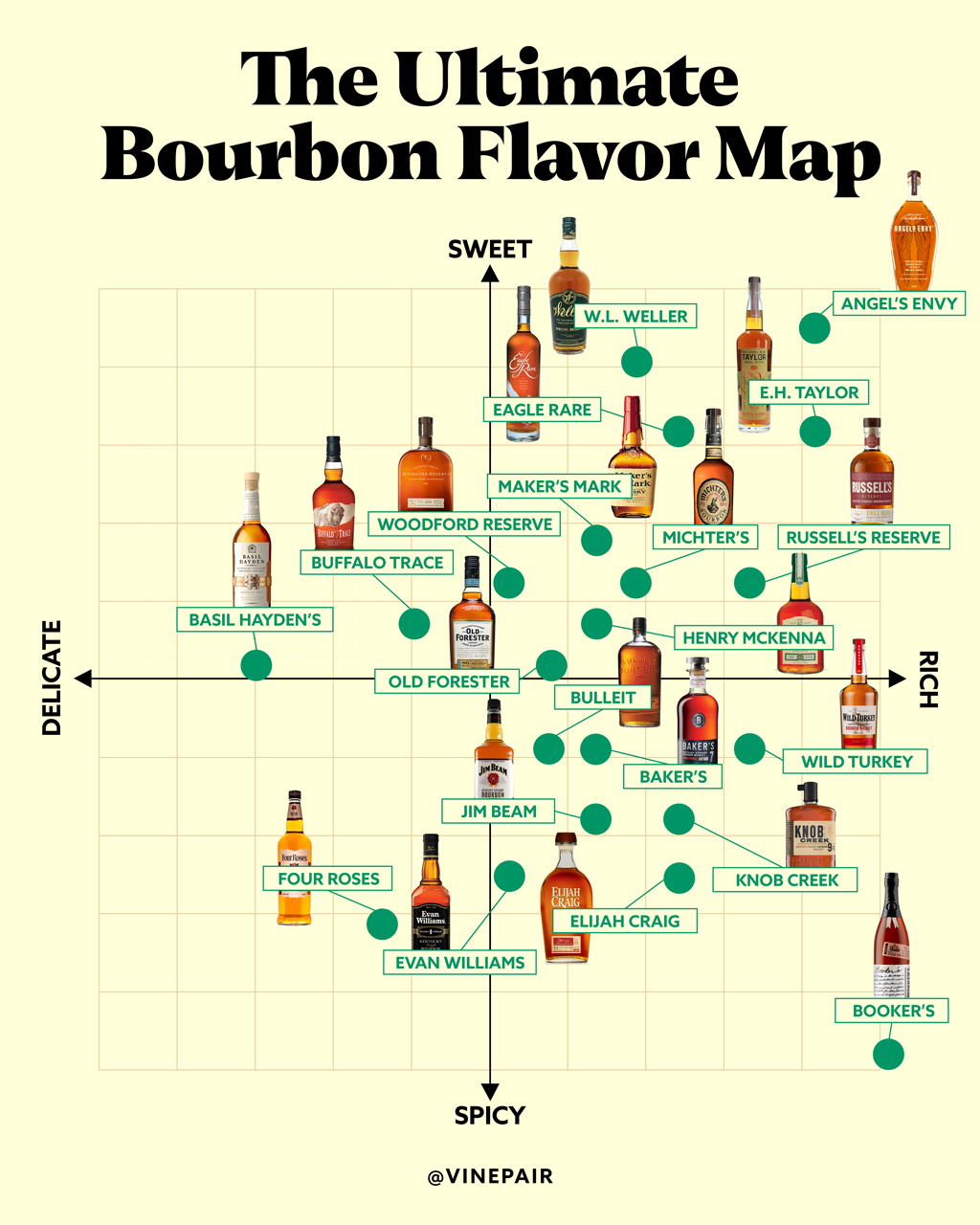![The Ultimate Bourbon Flavor Map [Infographic]](http://vinepair.com/wp-content/themes/vpcontent/images/blank.gif)
Most bourbon lovers know that among the many regulations that control its production, it is the 51-percent minimum inclusion of corn in its mash bill that defines the spirit. While this factor unites all bourbons, it is the proportions of the other grains used to complete the mash bill that make each individual brand unique (along with other production aspects like proof and aging period).
Whether a high proportion of spicy rye or generous amount of sweet wheat, these supporting grains play a vital role in shaping each bourbon’s identity. To show how these factors translate to the drinking experience, we’ve mapped out where the major brands land from a flavor perspective in the following infographic. Given that most producers release numerous expressions within each line, the infographic is based on the profile of entry-level bottles. As a general rule of thumb, you can expect each brand’s more expensive expressions to share a similar, but more pronounced version of the profile indicated below.
But first, let’s explore how mash bills and aging transform bourbon’s sweetness, spiciness, richness, and delicacy — and how we landed on the final infographic.
What Makes Bourbon Sweet?
Sweet notes arrive in part from bourbon’s majority corn content, and may be further enhanced when wheat is used as the secondary grain in a mash bill. As the aging distillate interacts with charred new oak barrels — another defining factor of bourbon production — lactones and vanillin form, lending the spirit sugary caramel and vanilla flavors.
What Makes Bourbon Spicy?
Bourbons with a higher rye mash bill showcase prominent notes of black pepper, clove, and cinnamon. Rye’s herbal grain character carries through fermentation and distillation, while barrel aging amplifies dry spice notes, giving the spirit a bold, lively profile.
What Makes Bourbon Rich?
Richness in bourbon stems from extended barrel aging and higher alcohol content. Over time, the spirit not only gains flavor from wood but also texture, thanks to oak tannins. This combination is perceived as weight on the palate, and contributes complexity that enhances the finish.
What Makes Bourbon Delicate?
Delicate bourbons often feature wheated or lower-rye mash bills, shorter aging, and more modest alcohol contents — the minimum allowed being 40 percent ABV or 80 proof. These factors yield a softer profile, with gentler depth of flavor and lighter overall mouthfeel.
Click here to view a larger version of the map!

![The Ultimate Bourbon Flavor Map [Infographic] The Ultimate Bourbon Flavor Map [Infographic]](https://vinepair.com/wp-content/uploads/2021/05/infographic_bourbonflavormap_card-375x450.jpg)